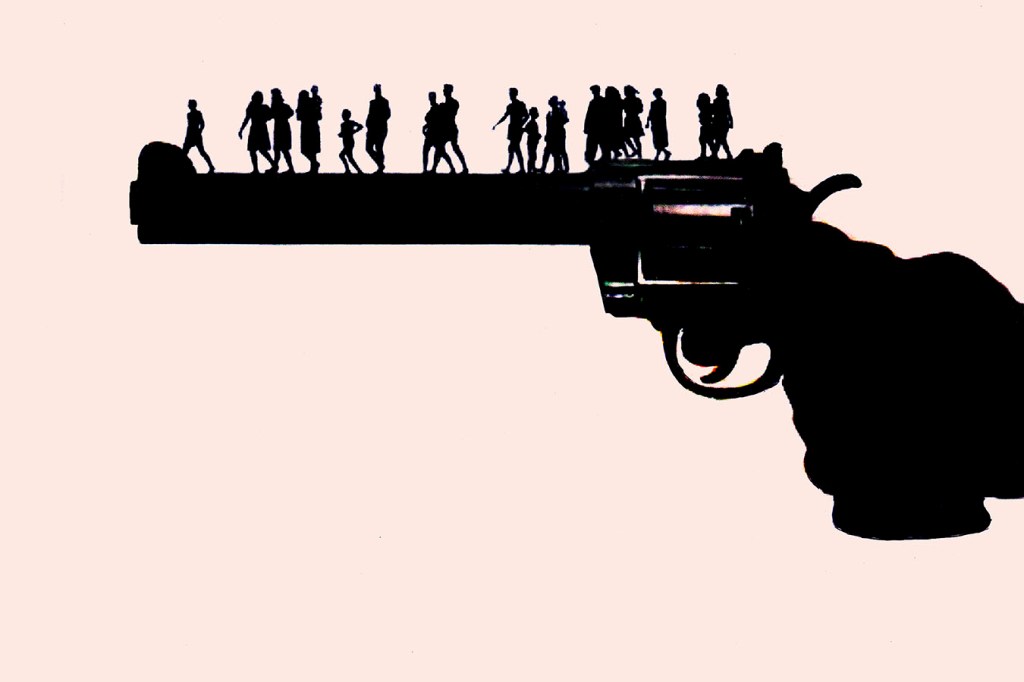After steadily declining for more than two decades, deadly shootings are rising across the country, according to a new government report.
The researchers also said that the number of suicides involving a firearm grew 21 percent between 2006 and 2016.
The report, published Thursday by the Centers for Disease Control and Prevention, looked at gun deaths around the country and in 50 major metropolitan areas. The researchers found a rise in gun homicides in 2015 and 2016, reversing a downward trend and bringing them to a level comparable to a decade ago.
It also reported that deadly shootings were up across all age groups nationwide.
“It is too soon to know whether recent increases in firearm homicide rates represent a short-term fluctuation or the beginning of a longer-term trend,” the report said.
The findings were released shortly after a gunman in Thousand Oaks, Calif., killed 12 people, including a county sheriff’s deputy, at a bar popular with college students, and less than two weeks after a gunman walked into a Pittsburgh synagogue and killed 11 people.
Despite the high publicity garnered by mass shootings in recent years, the Pew Research Center previously reported that the rate of firearm homicides began declining in the 1990s and then remained fairly flat from 2001 to 2014.
The federal researchers analyzed mortality and population data from the nation’s 50 most populous metropolitan areas to calculate both firearm homicides and suicides during two time periods, 2015-2016 and 2012-2013. The group also highlighted the rate of these incidents among 10- to 19-year-olds.
According to the report, more than 27,000 people were killed in gun homicides in 2015-2016, for a death rate of 4.4 per 100,000 people. The rate is higher for the 50 cities, where more than 17,000 people were killed, or 4.9 per 100,000 people.
By comparison, nearly 23,000 people died across the country and more than 14,000 died in those cities from firearm homicide in 2012-2013.
Andrew Papachristos, a professor of sociology at Northwestern University who was not involved in the study, said changes in the level of gun violence can come from a variety of factors, including different police protocols, gang violence and general mistrust.
Efforts by the federal government to research gun violence have been governed by the Dickey Amendment, a legislative rider for funding that groups seeking tighter control of guns felt limited the CDC’s efforts to examine the issue. But federal health officials, including Alex Azar, the secretary of Health and Human Services, say it does not impede federal research.
Nearly 45,000 people killed themselves with a gun in 2015-2016, more than 3,000 more than in 2012-2013, according to the report. The increase extended to city dwellers, too, although the rate of deaths among city dwellers was significantly lower than for the country as a whole.
Slightly more than 2,100 young people, including 851 in the major cities, died from firearm suicide in 2015-2016, according to the report.
The researchers noted that the sharp decade-long rise in gun suicides coincided partly with the Great Recession that began in 2007. But the increases have continued despite the economic recovery, they said.
The ease of access to a gun has been shown to be a key link to these acts. The time between deciding to commit suicide and attempting it can be as brief as 10 minutes, the report said, so finding a gun quickly can make the attempt much easier. Often, people do not try an alternative method when the highly lethal route is unavailable.
The report stressed proper storage of firearms to reduce the risk of suicide.
Jonathan Metzl, director of the Center for Medicine, Health, and Society at Vanderbilt University, who was not involved in the study, said mental health professionals struggle with trying to predict who is at risk.
“People act impulsively in moments of despair,” Metzl said. “And it may or may not be linked to psychiatric illness.”
Males also run a higher risk of dying by firearm suicide. According to the report, men and boys made up 85 percent of the deaths both in the 50 major cities and nationally.
Approximately the same share of men died by firearm homicide. However, it is important to note these issues affect different populations, Papachristos said. Minorities represent a disproportionate share of homicides, while suicide claims a disproportionate number of white men.
This story was produced by Kaiser Health News, an editorially independent program of the Kaiser Family Foundation.
